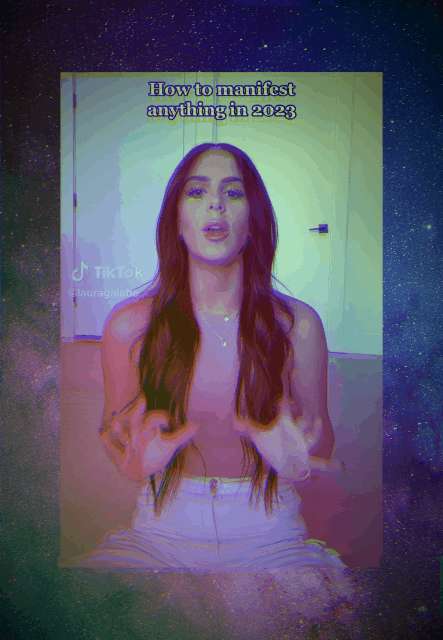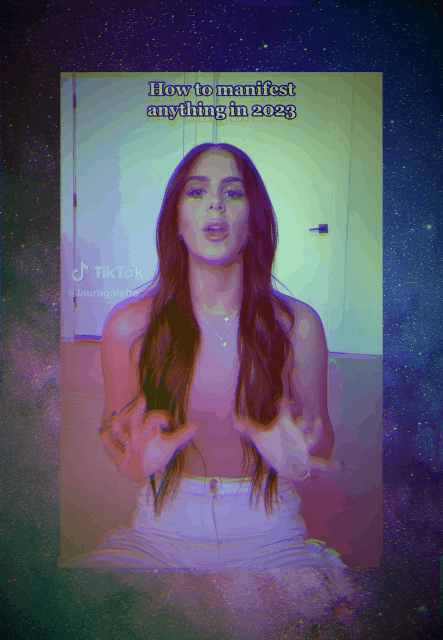Among the Spiritual Psychotics
Social media users trying to magically ‘manifest’ their desires are running into the hard limits of reality




Mass delusions—this sense that you can speak your reality into existence—are everywhere in our digital-first world. To quote the writer Matias Viegener, we exist only in words, “less in the spirit of total revelation than total text.” We are transforming from embodied, biological beings into digital entities composed of zeros and ones, data sets and social media posts. The strange thing about a world subsumed by the digital is that we’re simultaneously aware of being under constant surveillance and yet convinced that we have complete agency over our self-definitions.
One striking feature of writings about early digital communities like Multi-User Dungeons, a type of text-based role play, is that people could say they were anything, and everyone would accept the terms of their narrative self-definition. For example, if you identified as “sexy,” nobody would litigate it. You were what you said you were. There was an unspoken, shared sense that “in-game” (online) reality had different rules than the physical world. In the digital universe, you could simply speak yourself into the existence you desired.
Satirized by the famous 1993 cartoon in The New Yorker, “On the Internet nobody knows you’re a dog,” this aspect of the internet was both a threat and promise. Of course it opened the door to deception—stories about malicious “catfishes” have circulated since time immemorial—but it’s also what, in conjunction with the promise of global connectivity, underpinned the utopian vision of the web. The internet gave everyone the freedom to be whoever they wanted to be; we would no longer be slaves to the limitations the physical world imposed upon us. In Life on the Screen, sociologist Sherry Turkle wrote of this unique feature of the web. “You can be whoever you want to be. You can completely redefine yourself if you want. You don’t have to worry about the slots other people put you in as much. They don’t look at your body and make assumptions. They don’t hear your accent and make assumptions. All they see are your words.”
But as the internet grew up and—saliently—became commercialized, things began to change. The boundaries between URL and IRL blurred. Social media was supposed to showcase who we really were, not mask it. Identity-play belonged in games like Second Life or else was considered a sort of deviant behavior. (Think of how trolls evolved from an annoyance to a potential danger in the public imagination.)
The idea that we could play with our identity wouldn’t disappear completely, though. It’d be suppressed, rechanneled into ideas like “curation.” Only post your best photos, but at the end of the day they’re still you. The “avatar,” text-based or not, was no longer a separate entity; an astral body floating above your physical form. Your online self and your offline self were, at least allegedly, coming closer to being one-in-the-same.
I open up TikTok. The first video on my For You page, TikTok’s algorithmically customized landing screen, begins with a woman speaking into her phone, determined: “When your partner is saying things you don’t want to hear, and you want to use manifestation to fix it, you tune them out, respectfully, of course.” She continues, “You stop listening, and what you start doing instead is saying in your head what you want them to be saying.” As I continue to scroll, dozens of these come across my feed—videos touting the possibilities of “manifestation,” a New Age self-help strategy that suggests that one can will their ideal reality into existence through techniques like visualization.
“If there’s one video you save from my entire account, please, God, let it be this one,” another woman proclaims, sitting cross-legged on the floor. She goes on to offer tips on how to change your mindset and thereby call your ideal life into existence. The videos continue. From user@manifestationliveinyou2: If you’re seeing this on the 18th or 19th of January, you are about to receive the best news of your life … All you have to do is focus on your intentions. Others offer affirmations. Some provide tips, like how to keep a manifestation journal or how to visualize what you want. Visualization is key.
And then, finally, there’s a video from Allie Priestly, another young white woman who’s gained popularity talking about manifestation on the app. Priestly, though, has a different tone from the rest. She’s talking about spiritual psychosis.
“Spiritual psychosis is a real term, and someone who is in a true psychosis is going to be different from someone who’s experiencing a spiritual delusion, which most people are experiencing,” she explains. “But long-term spiritual delusion, while technically being sane for a long-term period of time, can lead people to psychotic breaks […] You can also have true psychosis that has a religious or spiritual bent.”
Priestly isn’t a mental health professional—by the looks of it, she’s a full-time content creator. But her point is compelling even if it’s not a clinical diagnosis. “Manifestation” often looks like a kind of willful delusion. The first video I saw instructed viewers to imagine that the person they’re speaking to is saying something different, with the explicit goal of willing the idealized speech into existence. It’s not a form of manipulation exactly, because the point is not to change the other person’s mind but to overpower the effect of their actions. That’s closer to witchcraft than it is to persuasion.
Contra its more moderate defenders, manifestation is not just about changing your mindset to be more confident. It’s about trying to “reshape your reality.” An affirmation here and there might help you shift your perspective to a more positive one, but what happens when it’s a sustained insistence that you can change your life with your thoughts, a la “tuning out your partner and imagining them saying something else”? Priestly’s theory that it can lead to a psychotic break, or at a minimum, a mental health disturbance, doesn’t sound so outlandish. Manifestation is not new. It’s also not, as people sometimes assert, “secular” or “New Age” prayer. It dates back to the 19th century and has ebbed in and out of popularity in American culture since then. It arrives in different guises. The popular Law of Attraction, which states that “positive thoughts bring positive results,” is more than a century old. The concept got a nationwide boost from Oprah in 2006 when she popularized Rhonda Byrne’s book The Secret.
Every time manifestation reappears in the national psyche, it’s greeted with the same criticism. Manifestation is “toxic positivity.” This is the New Age side of “hustle culture.” It’s Ayn Randian libertarianism for the spiritual set. Setting aside the potential danger of relying on what’s essentially magic to change your life, its critics argue that it places an undue burden on the individual. If you subscribe to something like the Law of Attraction, you’re implicitly minimizing the structures and systems in place that prevent people from reaching their goals or, more broadly, leading happy lives. Popular counterarguments today might evoke race or class: Is it a lack of positive thinking that keeps certain people down, or systemic racism? A psychologist might worry that it prevents people from ever facing up to and making peace with the truth of their own lives.
Manifestation is not an alternative expression of religion. For it to be religious or even “spiritual,” there would need to be something deeper there—some desire for truth, for something greater than oneself. But watching the TikTokers preaching manifestation, it is clear that few who’ve newly discovered this dressed-up prosperity gospel have even a passing thought about a Higher Power. The most modest proponents of manifestation want answers; the more ambitious want “to rebrand their lives.” It is as transactional as it comes.
The 2020s fixation on manifestation feels less like an extension of “hustle culture”—that go-get-them, lift-yourself-up-by-the-bootstraps attitude that characterizes so many American self-help fads—and more like an expression of maladaptive daydreaming. It is about reaffirming that the world is defined by you and you alone, that you speak reality to existence. We are all living in a lucid dream, it insists, and like dreams, the real fun begins when you know how to manipulate your environment.
The way we’ve been conditioned to manipulate our environments—and ourselves—is by way of the digital. On the internet, nobody knows you’re a dog. This is true everywhere online, but it’s particularly true of digitally native communities where there isn’t necessarily an expectation of meeting in person. Social media, supposedly tied to our nondigital identities, has made us forget how easy it is to fabricate things. If somebody tells me they live in Cincinnati and are a paralegal, I have no reason to believe they’d be lying. But the scary thing is, online, people lie about these things all the time. Maybe it’s for opsec concerns: They want to throw off the scent, and keep their identity under lock and key. But more likely, I’ve found, it’s because the lies they’re telling reveal an “emotional truth.” They may not literally work as a paralegal in Cincinnati, but they are “spiritually.” They feel like their identity is best expressed through this avatar, so the lie begins.
That’s where manifestation comes in. It’s what happens when you log off and learn once more that you’re a dog, and that you can’t eat at the dinner table with all the humans. Manifestation emerges as a coping mechanism. Not some libertarian entitlement, but rather an attempt to negotiate the gap between the physical world and the digital world.
The physical world is filled with limitations, where it’s not always as easy to express your “emotional truth.” The obsession with manifestation feels like an expression of running up against that wall—a desperate No! It is a desire to project my inner world onto an intransigent reality.
And of course, I write this only after visiting a psychic to ask about my identity as a writer, journaling about how I will be a writer, indeed that I am already a writer (that’s the Law of Assumption), visualizing being a writer, and anointing a candle with cinnamon oil in the hopes that it speeds things up.
Katherine Dee is an internet culture reporter and advice columnist. You can find her at defaultfriend.substack.com.